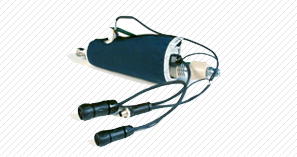Soy-Based Liquamelt Adhesive System Is Cool Chemistry
May, 2015
 How do you eliminate the negative issues associated with hot-melt adhesives – such as charring, messy clean-up and the danger of burns to users – and improve energy efficiency, without sacrificing performance?
How do you eliminate the negative issues associated with hot-melt adhesives – such as charring, messy clean-up and the danger of burns to users – and improve energy efficiency, without sacrificing performance?
Chemists at H.B.Fuller say the secret is a unique combination of equipment and a 40 percent soy-based dispersion, working together.
The room-temperature soy-based Liquamelt liquid goes through Fuller’s patented TurboActivator™ component, a device about the size of a 16-oz. water bottle. The equipment heats the material – made of soybean oil, high-molecular-weight ethylene vinyl acetate (EVA) polymers, polyolefins and water – to between 350 and 400 degrees Fahrenheit.
The water turns to steam, which provides a foaming action when the adhesive is dispensed. Because there are no hot hoses or tanks like other hot-melt glue systems, employees are less likely to get burned. Other foam systems also inject gas or other materials to foam their adhesives, which can add up to 50 percent in material costs.
Fuller says soybean oil gives Liquamelt an environmental edge, since 40 percent of the product is renewable material, replacing petroleum-based alternatives. Energy use is also reduced during material manufacturing and on the packaging line.
Liquamelt provides excellent bonding on fiber substrates like corrugate, paperboard, and coated stock. It has been field tested and is currently being used by H.B. Fuller customers.
For more information visit www.hbfuller.com.



